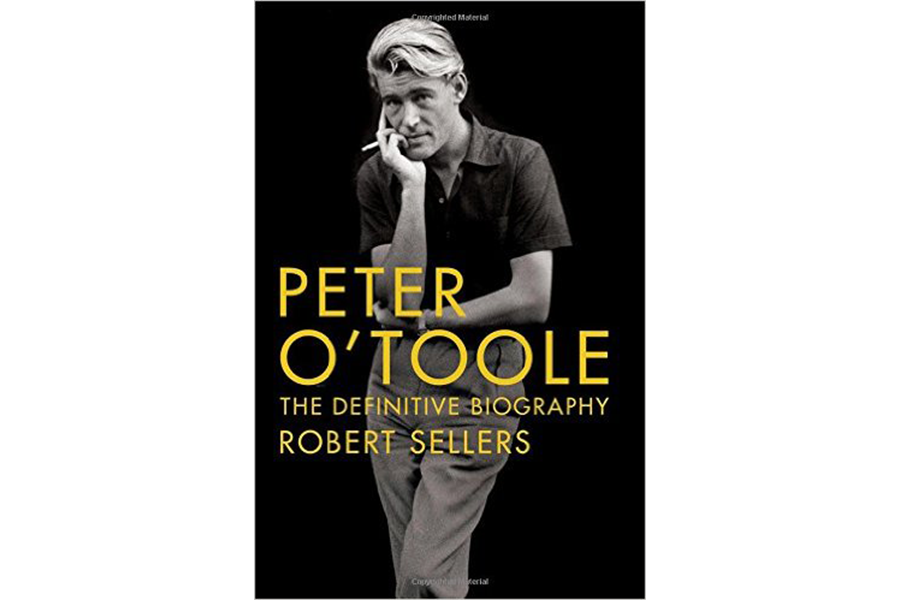'Peter O'Toole' captures what was unique about the enduring star
Loading...
Peter O’Toole might not have been as charming as Cary Grant, as convincing at projecting nobility as Jimmy Stewart, or as proficient on horseback as John Wayne, but he shared with those screen legends an even more important quality: star power.
To be sure, O’Toole’s acting abilities did not exactly go unnoticed: After all, O’Toole – born in 1932 in Leeds, England – was singled out for eight Oscar nominations for Best Actor between 1963 and 2007 (in addition to receiving an Honorary Oscar in 2003).
Yet it was arguably O’Toole’s persona – more than his chops as an actor per se – which left the biggest impression on audiences. Whether cast in roles swashbuckling (as the globe-trotting hero in 1962’s “Lawrence of Arabia”) or studious (as the courtly teacher to Chinese Emperor Pu Yi in 1987’s “The Last Emperor”), O’Toole frequently came across as variants of the same man: svelte, dashing, somewhat impetuous.
The point is nicely expressed in a passage in Peter O’Toole: The Definitive Biography, an accurately – if self-aggrandizingly – titled book by Robert Sellers. Discussing the rationale behind casting the actor in “The Last Emperor,” producer Jeremy Thomas itemizes the salient aspects of O’Toole’s façade: “He was the symbol of Western style, in a top hat and tails, and very statuesque with a great clarity of speech.”
Sellers himself is keenly aware of the ways in which O’Toole’s “theatrical performance style” set him apart from the rough-hewn, realistic approaches favored by such actors as Gene Hackman, Dustin Hoffman, and Al Pacino – all of whom came into their own in the decade after O’Toole’s initial triumphs in the 1960s (when he starred in “Lawrence of Arabia” and “The Lion in Winter” [1968]).
“O’Toole never had much truck with ‘gibberish spouting’ Method actors,” Sellers writes. “He knew nothing of the Stanislavski school, nor did he wish to know anything about it, that kind of introspective style of acting he felt did not fit in with what he believed to be the actor’s main job – the telling of a story.”
Perhaps the source of O’Toole’s emphasis on the externals of acting can be found in his youth, which is deftly sketched by Sellers. Most notable is the mark left on the actor by his father, Patrick, a flamboyant bookmaker from Ireland. “One can almost trace O’Toole’s love of performing and theatricality from those days watching his bookmaker dad, dressed all dandy on a stool shouting the odds,” Sellers writes. “The stool was his stage, the racetrack his theatre, the punters his audience.” And while O’Toole nursed unhappy memories of the Roman Catholic Church in which he was raised and schooled, his stint as an altar boy seemed to provide further encouragement for his subsequent career. “I loved every second of it,” O’Toole is quoted as saying of Catholic liturgy. “The mass was my first performance, it’s as simple as that.”
Sellers thoroughly documents O’Toole’s peak professional years – those that saw the release of “Lawrence of Arabia” and “The Lion in Winter” and others – but the author underestimates several major films made after O’Toole’s marketability began to diminish. O’Toole won his fifth Oscar nomination for his virtuosic performance in the deliciously acrid satire “The Ruling Class” (1972), but Sellers is too milquetoast in his assessment when he writes that it has achieved status as a a mere “minor classic.” Similarly, a producer of the bewitching comedy of early television “My Favorite Year” (1982) – which led to O’Toole’s seventh Oscar nomination – damns his own film with faint praise when he describes it as a “semi-classic.” Both films deserve to be regarded as full-fledged classics.
Of course, many of the films O’Toole made in the late 1980s and 1990s were beneath his station. Happily, however, Sellers recognizes that O’Toole brought authority to even the silliest projects. “His name and presence could still add gravitas to any production,” Sellers writes, and a fine case study is made of the two-bit science-fiction film “Phantoms” (1998): O’Toole is described as being genuinely respectful of the screenplay by Dean Koontz and acing a long monologue shot during a snowfall. And although “Supergirl” (1984) is blithely dismissed in a single line, the actor’s function in that film is roughly equivalent to that of Marlon Brando in “Superman” (1978) – he is there to supply a certain stateliness to a pop-culture product, and he does so with panache.
Near the end of the book, a blow-by-blow account of the making of O’Toole’s last film of note, “Venus” (2006), is offered. Relying on diary jottings by director Roger Michell, Sellers describes how O’Toole was wooed into signing onto the film; how his eccentric behavior and infirm condition nearly derailed it; and how the strength of his work brought about his eighth Oscar nomination, just six years before his death at age 81. “Venus” was a high note for O’Toole to end on – and the story of its making is the perfect note with which to conclude this fine biography of an actor whose star power never dimmed.
Freelance journalist Peter Tonguette writes a classical music column for The Columbus Dispatch. He has also written for The Wall Street Journal, The Weekly Standard, and National Review.






